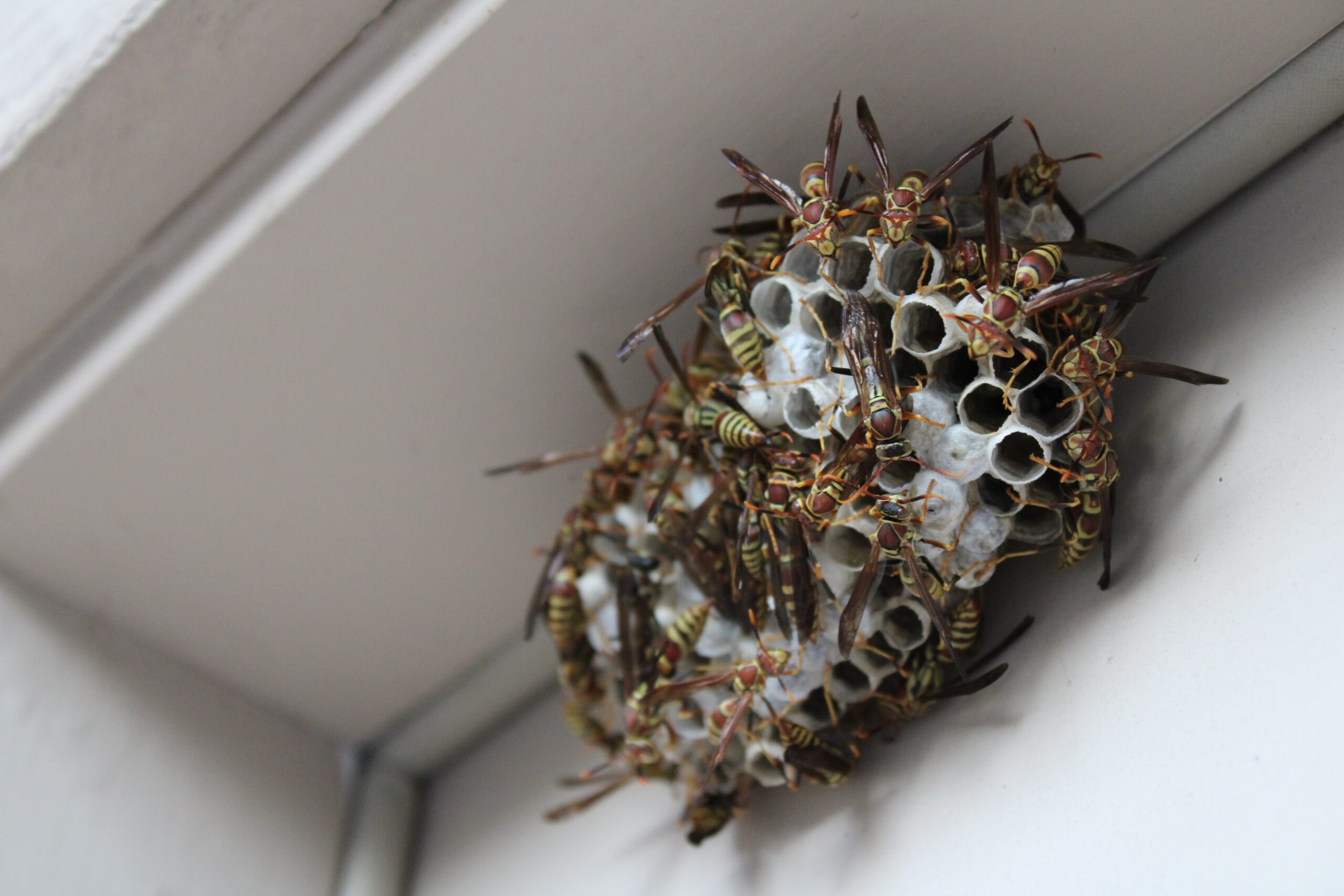Ah, summer days filled with sunshine, picnics, and gentle breezes—until those pesky winged creatures decide to crash the party. Yes, we’re talking about wasps! These tiny buzzing insects can turn a peaceful outdoor gathering into a whirlwind of fear and swatting. But fear not! In this article, we’ll delve into the world of wasps, their behavior, and the best ways to keep them at bay. So grab a refreshing drink, and let’s embark on our journey to conquer these buzzing troublemakers!
- Meet the Wasps:
Wasps, like us, are social creatures that live in colonies. They come in various shapes, colors, and sizes, but the ones we’re most likely to encounter are the yellow jackets and paper wasps. These winged insects have a slender body, a pair of wings, and, unfortunately, a painful sting. While they serve important ecological roles, like pollination and controlling other pests, their presence can disrupt our peaceful coexistence.
- The Buzz on Wasp Behavior:
Understanding the behavior of wasps can help us navigate encounters with them more effectively. Wasps are attracted to sweet smells, particularly fruits, sugary drinks, and even the delicious aroma of our barbeques. They’re highly territorial, guarding their nests with great determination. Provoking a wasp may lead to aggressive behavior, increasing the risk of getting stung.
- Prevention is Better Than Stinging:
Now that we know a bit more about our buzzing friends, let’s explore some simple yet effective ways to prevent wasp encounters:
a. Cover Up Food and Drinks: When dining outdoors, keep food and beverages covered until you’re ready to enjoy them. Uncovered treats are like an open invitation to these winged intruders.
b. Trash Disposal: Seal trash cans tightly and keep them away from gathering areas. Wasps are opportunistic foragers, and a tempting trash can is like a five-star buffet for them.
c. Seal Entry Points: Inspect your home for any openings that may allow wasps to build nests, such as cracks, gaps, or holes. Seal them up promptly to prevent unwanted houseguests.
d. Landscaping Tactics: Trim bushes, shrubs, and overhanging branches near your home to reduce potential nesting sites. Regular maintenance of your outdoor areas can make them less inviting to wasps.
- Safe Encounters:
Sometimes, despite our best efforts, a curious wasp may find its way into our vicinity. Here are some tips for safe encounters:
a. Stay Calm: It’s natural to feel a jolt of panic when a wasp approaches, but try to remain calm and composed. Sudden movements or swatting can provoke them and increase the likelihood of being stung.
b. Remain Still: If a wasp lands on you, avoid flailing or swatting. Stay still and gently blow on the wasp to encourage it to fly away. Remember, they’re as eager to avoid conflict as we are.
c. Exit Strategy: If you find yourself in the proximity of a wasp nest, retreat slowly and quietly. Do not disturb the nest or make sudden movements that might provoke the wasps into action.
- When All Else Fails: Professional Pest Control:
Despite our best efforts, wasp infestations may occur, posing a threat to our well-being. In such situations, it’s wise to call upon professional pest control services. Experienced technicians can safely assess the situation, remove nests, and implement effective solutions to ensure wasps don’t become unwanted roommates.
Wasps, though sometimes bothersome, play vital roles in our ecosystem. By understanding their behavior and implementing preventative measures, we can coexist harmoniously. Remember, prevention is key, but if the need arises, professional pest control is just a phone call away. With these tips in mind, go forth and enjoy the summer with peace of mind, free from buzzing trouble. Cheers to a wasp-free season!

